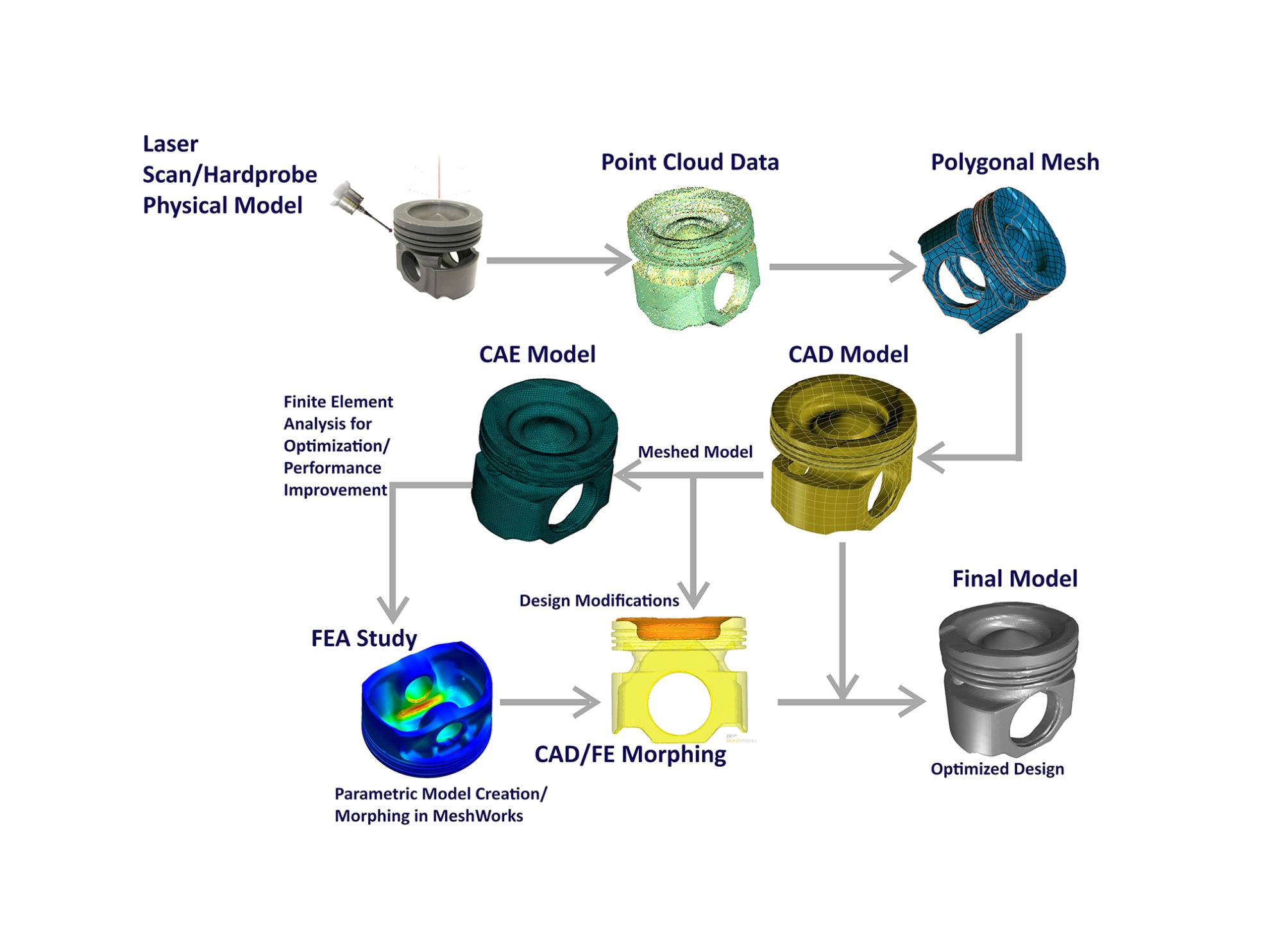Reverse engineering involves analyzing a product to learn its design, functionality, and implementation. It plays a crucial role in open-source projects, enabling developers to study existing projects, understand their underlying principles, and adapt them to suit their specific needs or contexts. This can significantly accelerate the development process and foster innovation.

Benefits of Reverse Engineering for Open Source Projects:

-
Reuse and Adaptation: Reverse engineering allows developers to reuse existing code, algorithms, and design elements from open-source projects. This saves time and effort compared to starting from scratch, especially for complex or specialized projects. Additionally, it enables developers to adapt these elements to their specific needs, customizing them to fit their project’s unique requirements.

-
Error Identification and Mitigation: When reverse engineering an open-source project, developers can identify potential bugs or inefficiencies in the original code. This allows them to improve the reliability and functionality of the project by addressing and fixing these issues. Furthermore, reverse engineering can reveal optimization opportunities, enabling developers to enhance the performance and efficiency of the project.
-
Architectural Understanding and Inspiration: By examining the design and implementation of an open-source project, developers gain a deeper understanding of its architecture and how its components interact. This knowledge can inspire new ideas and solutions for their own projects. Reverse engineering can also reveal innovative techniques and approaches used in the original project, which can be adapted and incorporated into new developments.
-
Community Collaboration: Reverse engineering open-source projects encourages collaboration within the community. When developers encounter challenges or have questions during the reverse engineering process, they often turn to online forums, mailing lists, or chat groups associated with the project. This interaction fosters knowledge sharing, collective problem-solving, and the exchange of insights among developers, leading to improvements in the original project and its derivatives.
Challenges in Reverse Engineering Open Source Projects:
-
Licensing and Copyright Considerations: Reverse engineering is generally permitted for open-source projects released under permissive licenses. However, some licenses impose restrictions on the use and modification of the code. Developers must carefully review the license terms to ensure compliance and avoid legal issues. Additionally, understanding the copyright status of the project’s code, documentation, and assets is essential to avoid copyright infringement.
-
Complexity and Obfuscation: Some open-source projects may involve complex codebases or employ obfuscation techniques to protect intellectual property. This can make it challenging to reverse engineer the project and understand its inner workings. Developers must possess the necessary skills and expertise to overcome these obstacles and successfully extract meaningful insights from the code.
-
Documentation Gaps: While many open-source projects provide extensive documentation, others may lack detailed explanations, comments, or tutorials. This can hinder the reverse engineering process, making it difficult to understand the project’s design, implementation, and intended usage. Developers may need to rely on trial and error, code analysis tools, or online resources to piece together the missing information.
Overall, reverse engineering is a valuable practice in the open-source community, enabling developers to learn from existing projects, adapt them to new contexts, and create innovative solutions. However, it is essential to consider the licensing, complexity, and documentation aspects of open-source projects to ensure ethical and successful reverse engineering efforts.[The Influence Of Reverse Engineering On Open Source Projects]
Executive Summary
Reverse engineering plays a vital role in the success and evolution of open source projects. Its systematic approach to analyzing, understanding, and learning from existing technologies provides valuable insights for creating innovative solutions, enhancing project quality, fostering collaboration, and promoting transparency. This article delves into the influence of reverse engineering on open source projects, highlighting its key subtopics and providing in-depth explanations with practical examples.
Introduction
Open source projects are collaborative endeavors that encourage developers from diverse backgrounds to contribute their expertise and creativity to develop innovative products and solutions. Reverse engineering stands as a powerful tool within this realm, enabling developers to analyze existing software, hardware, or systems to extract knowledge and design principles that can inspire new developments, improve existing ones, and ultimately advance the progress of open source projects.
Understanding How Components Work
Reverse engineering helps developers gain a detailed understanding of how various components function within a system.
- Disassembling: Breaking down the system into individual components for meticulous examination.
- Analyzing: Deciphering the structure, relationships, and interactions between the components.
- Documenting: Comprehensive record of the system’s design, architecture, and functionality.
Identifying Areas for Improvement
By thoroughly understanding a system’s inner workings, developers can pinpoint potential weaknesses and areas for improvement.
- Spotting Inefficiencies: Identifying inefficiencies and bottlenecks that hinder the system’s performance.
- Identifying Security Vulnerabilities: Uncovering security flaws and vulnerabilities that could compromise the system’s integrity.
- Uncovering Hidden Features: Discovering latent features or functionalities that were previously overlooked or undocumented.
Inspiring New Ideas
Reverse engineering serves as an engine for creativity and innovation, sparking new ideas for enhancements and advancements.
- Learning from Others’ Successes: Studying successful products and systems can provide valuable lessons for implementing similar strategies or adopting best practices.
- Identifying Market Opportunities: Analyzing existing solutions can reveal unmet needs and untapped market opportunities for new or improved products and services.
- Generating New Concepts: Combining insights from multiple sources can lead to novel solutions that disrupt existing paradigms.
Fostering Collaboration
Reverse engineering promotes collaboration and knowledge sharing among developers, fostering a collective learning environment.
- Sharing Knowledge: Openly sharing findings, insights, and improvements derived from reverse engineering cultivates a communal pool of knowledge.
- Peer Review: Subjecting reverse-engineered solutions to peer review enhances their quality and robustness.
- Collaborative Innovation: Collaborative efforts to reverse engineer complex systems hasten the pace of innovation and discovery.
Promoting Transparency
Reverse engineering promotes transparency by enabling anyone to scrutinize the inner workings of a system, fostering trust.
- Accessibility: Reverse engineering makes it possible for the public to examine and understand complex technologies, increasing transparency.
- Verifiability: The ability to independently verify the disclosed information instills confidence in users and stakeholders.
- Reproducibility: The reproducibility of reverse engineering processes allows others to verify and build upon existing findings.
Conclusion
In the realm of open source projects, reverse engineering emerges as a potent force, driving innovation, enhancing quality, catalyzing collaboration, and cultivating transparency. By meticulously dissecting existing systems and extracting valuable insights, developers can breathe life into new and improved solutions, pushing the boundaries of technological possibilities. As technology continues to evolve at a breakneck pace, reverse engineering will undoubtedly remain an indispensable tool for open source projects to thrive and flourish in the digital landscape.
Keyword Phrase Tags
- open source
- reverse engineering
- innovation
- collaboration
- transparency

Any infrastructure can have the added benefit of reducing cost, with less resources needed, technically and otherwise, to make any successful project.
Reverse engineering can, therefore, be used to analyse and understand the design and implementation of open source projects, and to identify potential security vulnerabilities or design flaws. This information can then be used to improve the security or design of the project.
I think it’s interesting how reverse engineering, the process of taking apart an existing product to understand how it works, can be utilized to enhance the security and design of open source projects. Who would’ve thought?
Additionally, reverse engineering of open source projects can help identify any hidden security flaws or design flaws, making the project more robust and secure.
It’s surprising that reverse engineering, which involves examining an existing product to understand its inner workings, can be so valuable in fortifying the security and design of open source projects.
What is often overlooked is the potential for reverse engineering to reveal any underlying security vulnerabilities or design flaws, which can be critical to the success of any open source project.
By using reverse engineering to analyze open source projects, developers can gain valuable insights into the design and implementation ofthese projects, which can then be leveragedto improve the security or design of their own projects.
Open source projects often rely on the contributions of multiple developers, which highlights the great potential for reverse engineering to identify potential security vulnerabilities or design flaws, helping make the project more reliable.
How cool is it that reverse engineering, the art of taking apart a product to figure out how it ticks, can be such a game-changer when it comes to polishing the security and design of open source projects?
Reverse engineering, the puzzling process of dissecting a product to unveil its intricate workings, can, unbelievably, be pivotal in refining the security and design of open source projects.